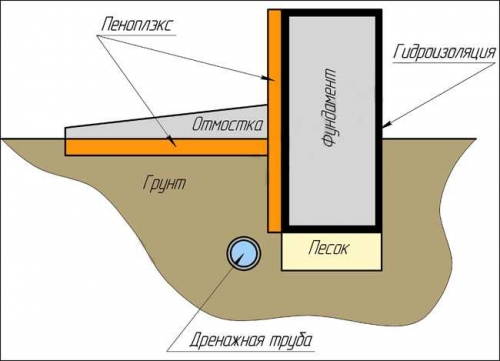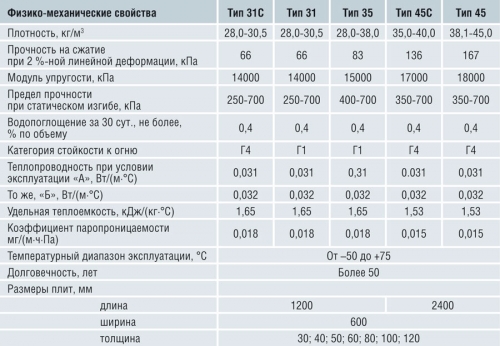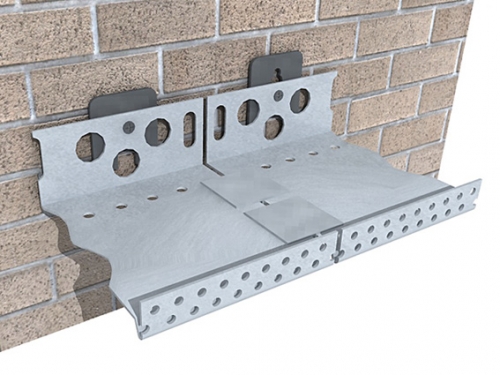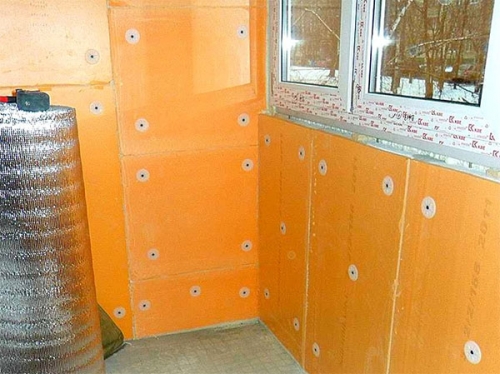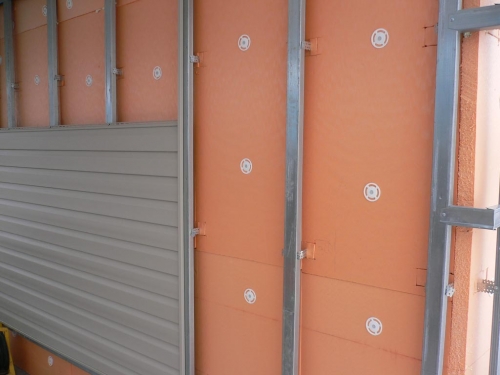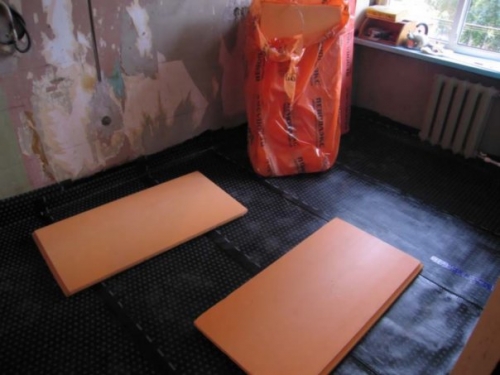After the repair of their housing, whether it be an apartment in a city line or a house in rural ...
|
|
Construction of a cottage is always a comprehensive process, divided into several ... |
Bath, sauna steam room belong to functional auxiliary buildings with increased ... |
Penoplex plates: review, properties, styling
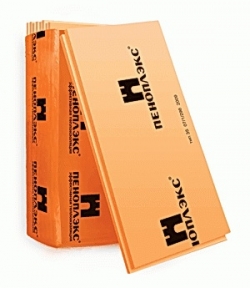
When it comes to the house, the first associations in addition to comfort, this is also comfort and warmth. Therefore, insulation of all kinds of species and made of various raw materials will not stop causing increased interest among consumers. The use of this material becomes a stable trend, so it is worth reading in more detail with the characteristics of the foam and the methods of its installation.
Content:
- Penoplex plates
- Types of foam and area of \u200b\u200bapplication
- Foamine characteristics
- DIY insulation with a foamyplex
Penoplex plates
Penoplex is foamed polystyrene obtained by extrusion.
- The process itself was invented more than half a century ago in American laboratories. The result was the emergence of a new material with a structure of many small and completely sealed cells that do not exceed 0.2 mm and form a uniform surface.
- A foaming additive is introduced into the polymer granules, which is connected to them under pressure and when heated to a certain temperature. The resulting mass is pressed through the extruder. Foaming agents (and basically it is carbon dioxide and a mixture of light freons) are non -toxic materials, they are non -combustible and do not emit harmful substances. In addition, as soon as the manufacturing process is completed, all these auxiliary additives are replaced by air from the environment.
Foamplex photo
As a result, a thermal insulation product is obtained with good indicators for the materials of this group intended to protect heat. These include:
- low thermal conductivity;
- strength;
- minimum moisture absorption.
Such characteristics provide the foam with a constant presence on private construction sites and large -scale industrial buildings.
The plates of the material are packed in a film that protects from the penetration of sunlight. Original packaging allows you to store foam polysterol in the open air. But, despite the polyethylene film, it is worth providing them with additional protection against UF rays that can damage the upper layer of insulation. Other special storage conditions are not required, because foamed polystyrene is not afraid of moisture and temperature changes, the main thing is the control of the safety of the packaging.
Types of foam and area of \u200b\u200bapplication
Five existing brands of this insulation have a fairly wide range of use.
- Foamplex 31 p It has density indicators from 28 to 30 kg/m. Belongs to the combustibility group G4. It is used in the following areas:
- insulation of foundations in the horizontal and vertical direction, as well as roofs on the base from reinforced concrete;
- when laying the bowls of pools, engineering networks, with insulation of temperature bridges;
- insulation of various underground structures fire wells, accumulative tanks;
- during the construction of local water supply and sewage systems in private houses, provided that communications are laid in the freezing zone;
- class 31 foam stoves are also used during installation of finely buried foundations.
- Foamine 35 It is produced by a density of 28 to 37 kg/m. Group of combustibility G1. It is used, as well as the aforementioned variety in the insulation of foundations in two directions, roofs (including the corrugated board and the pitched ones), cold bridges and engineering networks. In addition, it is advisable to use the foam 35:
- when insulating walls;
- when putting foundations as insulation under the sole;
- in the floors of residential buildings, storage facilities, freezers and ice arenings.
Separately, it is worth saying that at the time of the production of this brand of polystyrene foam to the starting raw materials, special additives are added at the mixing stage that increase the stability of the insulation to burning. Such plates are poorly burning and prevent the spread of fire further, and during flowering, only two types of gases are distinguished (carbon dioxide and carbon monoxide), unlike a number of other insulating materials that produce a whole complex of harmful substances and compounds.
- Foamplex 45 sIt has a density of 35 to 40 kg/m. Class of combustibility G4. It is used to warm the foundations operated under the load of roofs and floors.

- Foamplex 45. Density indicator from 38 to 45 kg/m, a group of combustibility G4. The scope coincides with the above types of material. And besides this, it is used to warm the floors, foundations and roofs that withstand a large load. That is, the material will not collapse when exposed to a load of up to 50 tons per 1 square meter on it.
- Foamyplex 75 In the construction of buildings is not used. Its density is from 40 to 53 kg/m allows you to use it in the construction of the runways of airfields and aviation hangars.
Foamine characteristics
- The density of the insulation depending on the brand can be from 28 to 53 kg/m.
- Foamyplex is recommended only in the temperature range from -50C to +75C. Compliance with operating temperatures is a guarantee that the material will retain its technical characteristics. In case of violation of this condition, the foam plate can deform and lose part of their thermal insulation and mechanical characteristics.
- When choosing the adhesive composition, you should carefully read its instructions and read the manufacturer's recommendations regarding the use of a product for gluing polystyrene.
- Extruded polystyrene polystyrene foam stoves have good chemical resistance to most substances and materials used in the construction. These include:
- means for protecting wood (only on water -based, not containing solvents);
- bitumen mixtures;
- cement;
- lime.
- Substances in the composition of the solvent can have a destructive effect on the foam, lead to its softening and, as a result, shrinkage of material slabs. The group of substances with which contact should be avoided when working with foamed polystyrene refers:
- painting Dilias;
- coal resin and its derivatives;
- solvents (acetone, oil toluene, ethyl acetate).
- Foaming stoves do not pose a threat to human health and are not dangerous for the ecology, which is confirmed by research and certificates for these products.
- The material of the foam can be described by several more indicators.
- Low thermal conductivity (thermal conductivity at 20-30c - 0.030 W/(MC)). The indicator according to this evaluation criterion is significantly lower in comparison with the average values \u200b\u200bof most other materials for isolation.
- Tests of the slabs for water absorption showed that the sample immersed in the water, gained moisture for the first 10 days. And in a month he absorbed no more than 0.6% of the volume. That is, first, the cells located closer to the surface slowly gained water, and after filling them, the liquid no longer penetrated. Small water absorption of the foam enables it to use it in conditions of high humidity without changing thermal conductivity. That is, foamed polystyrene can be used without additional waterproofing, if certain environmental conditions do not require it.
- According to the vapor permeation indicator, a foam plate of 2 cm thick is equivalent to a layer of roofing material.
- He is able to maintain his properties even with numerous frosts and subsequent thawing. Their service life is at least 50 years.
- The extrusion method used in the production of plates gives an uniform and dense structure of finished products at the output. This gives the foamyplex stably high compression strength.
- Many have already appreciated simplicity, ease of work and when installing extrusion polystyrene foam. The material has no restrictions on the use of any weather conditions, as it does not require protection against atmospheric precipitation. Easy processing and simple cutting with a conventional knife is extremely appreciated by builders.
Foamplex video
DIY insulation with a foamyplex
Extruded polystyrene foam, with all its versatility and remarkable characteristics, will become useless if the technology breaks in the installation process. Therefore, we consider the stages of insulation with a foam.
Installation of the foam from the inside of the building
- Preparatory work. The standard procedure for all types of construction and finishing work is also observed in this case. Be sure to completely remove all traces of the previous surface finish and paintwork. The fungus and mold will have to get rid of a special composition, and then it is recommended to conduct a sanctuary with any acquired products with a bactericidal property. The surface should be as aligned as much as possible and pronounced.
- Assembly of a basement. The installation of this special design is necessary for a more even and dense fit of polystyrene tilts. The profile will also protect the insulation from external influences. Its fastening is carried out on the dowel-gvo, and the tight fit of the canvas to the finished surface will help to provide lining washers. An important requirement is the correspondence of the width of the basement profile thickness of the foam plate. With the help of docking plates, neighboring structural elements are joined by each other. Be sure to leave a distance between them about 2 mm.
- Installation of insulation plates. A layer of glue around the entire perimeter of the material and in the center is applied to the foam. Many professional builders advise not to save, well smear the entire stove with adhesive composition. After that, foamed polystyrene is pressed to the profile. The protruding excess glues are removed, and it is better to fill small cracks with inserts from pieces of polystyrene foam, which remained when pruning. The question using the installation foam for these purposes is controversial. Some masters do not see anything terrible in its application, but there are opinions that such sealing can lead to the formation of cracks.
- Final consolidation. After the glue dries (about 3 days), the work continues. With the help of dowels-gribly, the final fastening of the material occurs. The metizes are located in the middle of the stove and along its perimeter, but with the calculation to connect neighboring sheets.
- Wall insulation from the side of the dwelling is not always appropriate. The main disadvantage is the reduction in space due to the thickness of the material. Therefore, the most common type of skin is outside.
How to insulate a foam from the outside of the building
- This method of insulation will need material with a thickness of 80 to 100 mm. Stages are similar, but their nuances are available.
- The facade is aligned, cracks are closed and the wall is primed as the final processing.
- The foam is glued, as described above and on the same principle is attached to the dowels.
- If it is planned to be finished by plaster, then as a preparatory stage it is only necessary to stick a reinforced net.
- If the final finish is presented using PVC panels or siding, then accordingly you will have to take care of the vertical guides for their fastening. An additional layer of vapor barrier will not be needed, and insects and rodents do not threaten foam polystyrene.
How easy it is to verify, all the work is enough to do it yourself. The situation is more complicated with insulation from the outside of apartments in a multi -storey building. In this case, industrial climbers cannot do without services.
Thermal insulation of the floor using a foam
- One way is to warm up on the lags. This option is suitable for wooden houses installed on a columnar foundation. In this case, the slabs of extruded polystyrene foam in the gaps between the lags.
- First, the old floorboards are dismantled if the process of insulation is in the already living room, and not at the construction stage. If they are planned to be returned to the place, then this is a good reason to consider each for integrity and process the impregnation with protection against decay.
- The installation of new lag begins with the extreme timber, aligning it in level, and then the beam is attached from the opposite end. Now, pulling the fishing line between them, you can focus on it to install the rest of the lags, not forgetting to check so that they are located strictly in the horizontal plane.
- A layer of waterproofing using a construction stapler is attached to the assembled bars. The edges of the film should reach the middle of each guide.
- Foam stoves are laid out on top. It is recommended to be checkening. It is necessary to make sure that the installation foam that the seams will be processed does not include toluene that can have a destructive effect on the material.
- The final fixing of the foam occurs using dowels, and boards are again mounted on top.
Another styling technology implies insulation with the subsequent cement screed. It is available to execution both during repair work and when erecting the building.
- At first, an even layer of gravel is poured onto the soil 30-40 cm high. It is thoroughly compacted, and sand is covered with the second layer (approximately 10 cm). The pressing procedure is repeated with it too. The reinforcing cage is assembled, which is poured with concrete. After the screed dries, the actual insulation of the surface begins.
- Waterproofing is easiest to perform from dense polyethylene.
- The stoves of the foamyplex, as in the previous version, are located in a checkerboard pattern. A reinforcing mesh is pulled on top.
- After fastening the polystyrene foam, the screed is re -pouring. She is allowed to dry and laid the flooring.
The use of extruded polystyrene foam as a heater is a worthy alternative to any other way to protect the home from heat loss and create additional sound insulation. And although it has a lot of advantages, the main pleasant moment in the use of the foam for many is still its availability and ease of installation.


